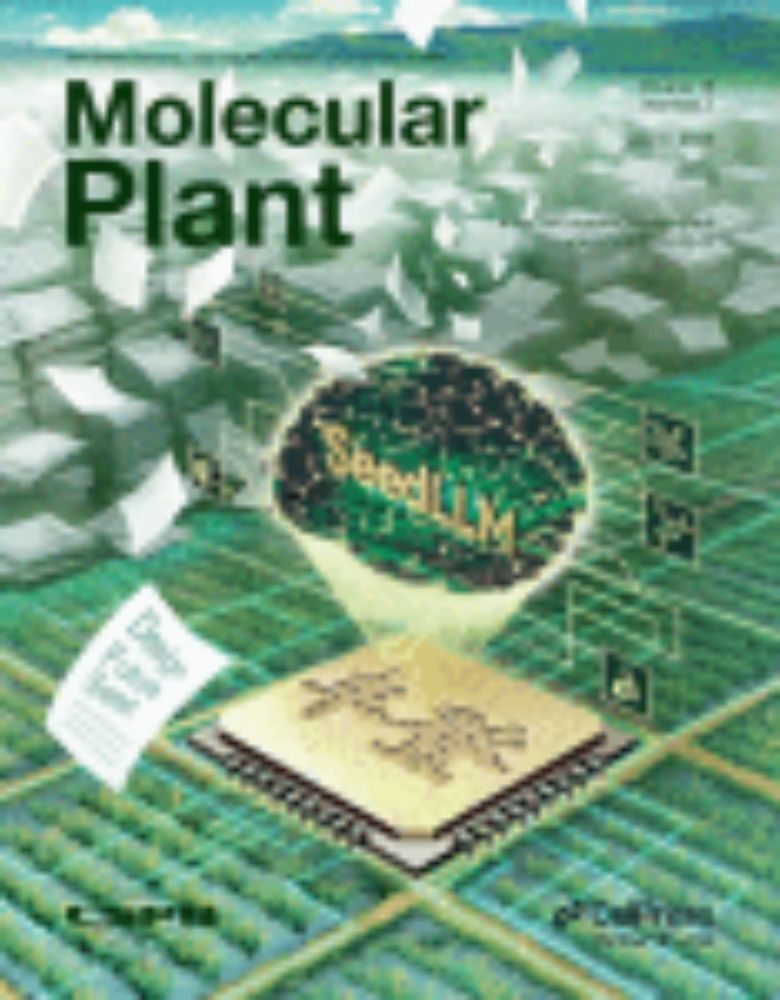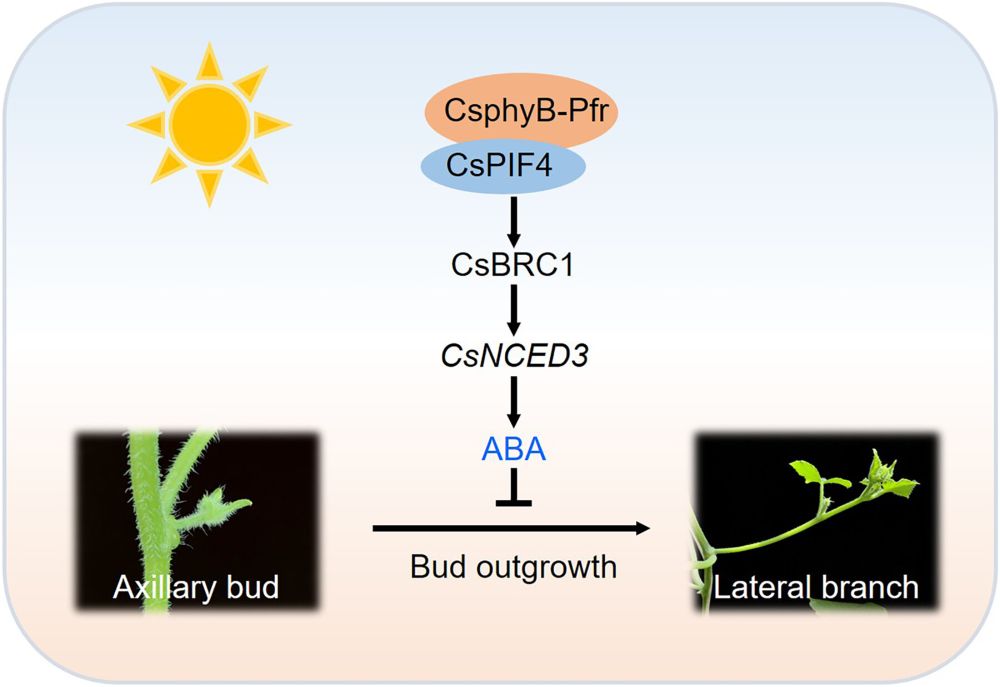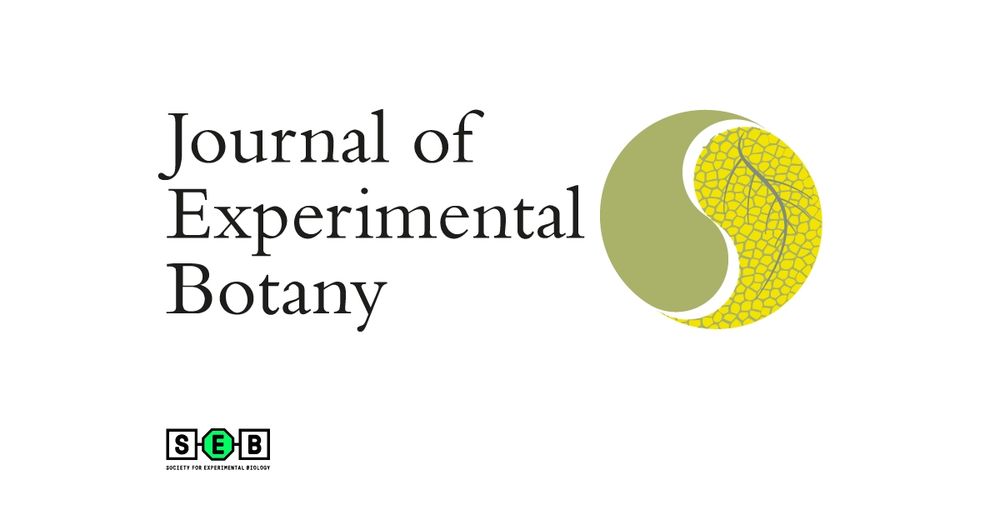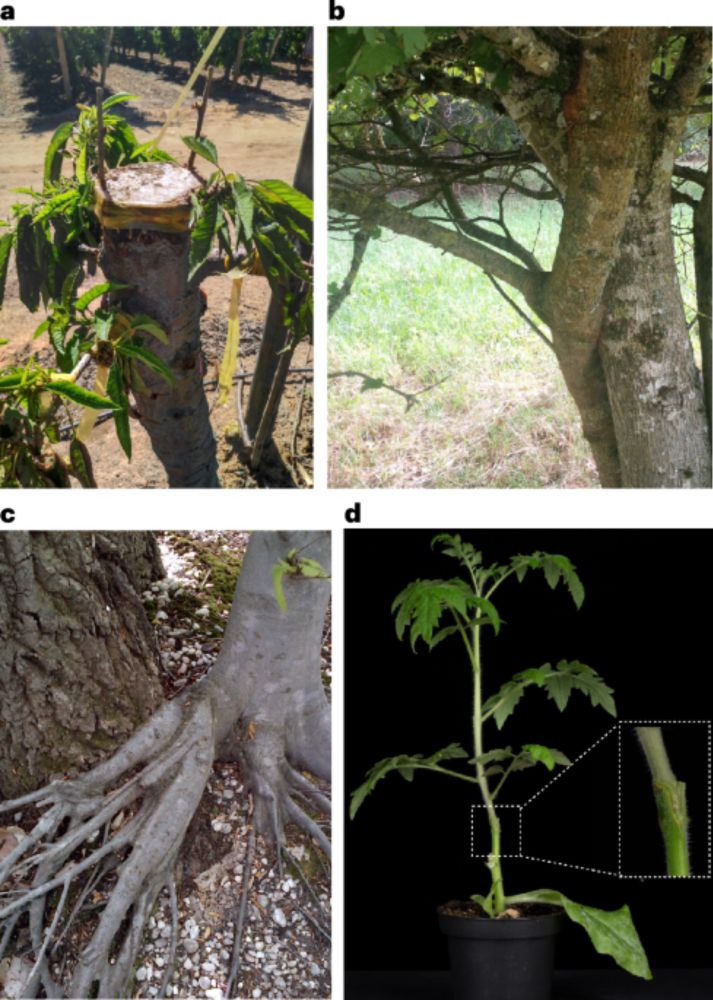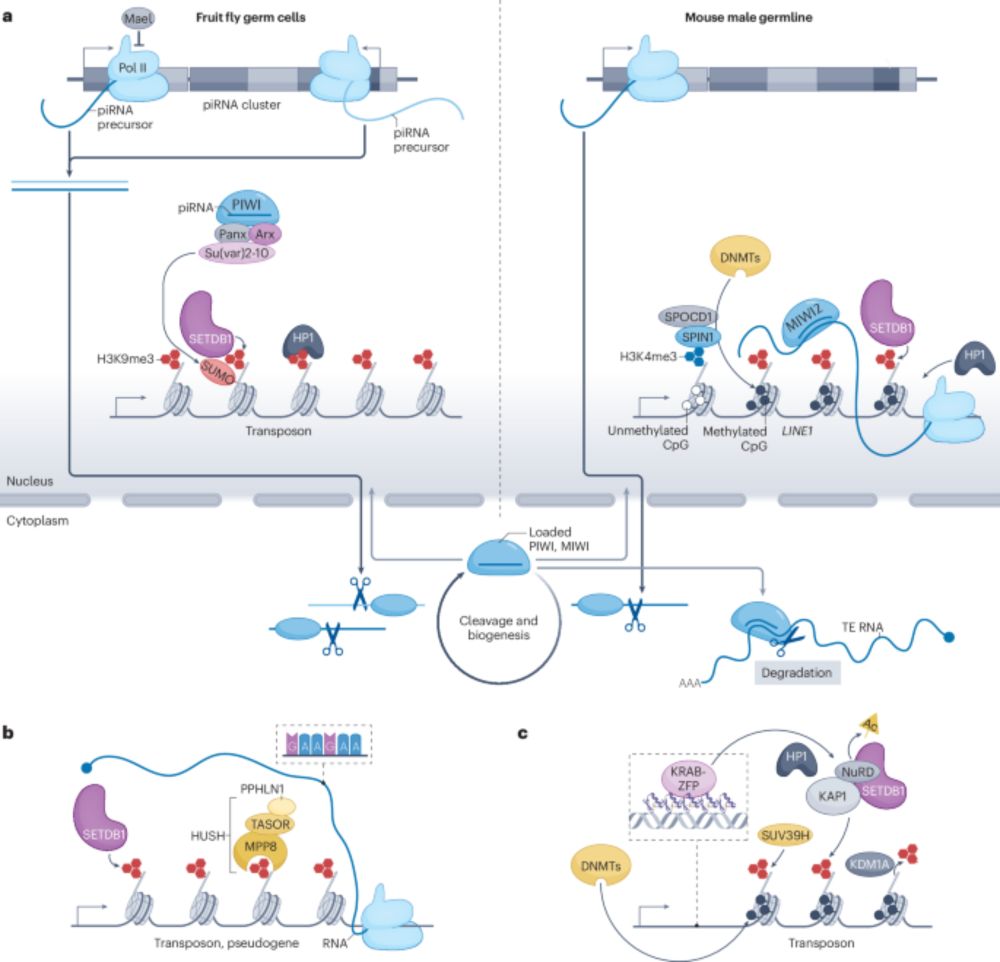
An individual of Roscoea tibetica from Shangri-La, located in the mountains of Southwest China. The image in the top right corner illustrates the substantial alterations in the relationship between genome size and stomatal size when transitioning from wild conditions to a common garden environment. Similarly, the image in the lower left corner demonstrates the significant changes in the relationship between stomatal size and stomatal density under the same conditions.
Xiao et al. tested the role of genome size in adaptation in 53 Alpine ginger herb populations, finding that genome size has undergone adaptive evolution driven by environmental stress; smaller genomes are advantageous in changing alpine habitats
🔗 doi.org/10.1093/gbe/evaf151
#genome #evolution
19.08.2025 00:57 — 👍 7 🔁 5 💬 0 📌 0

Analysis of telomere-to-telomere genome of red carrot TXH4 elucidates the role of DcLCYE and DcLCYB1 in lycopene accumulation in carrot. #T2T #RedCarrotGenome #LycopeneAccumulation #PlantGenomics #Genomics @horticulturer.bsky.social
academic.oup.com/hr/advance-a...
10.08.2025 08:31 — 👍 4 🔁 2 💬 0 📌 0

Telomere-to-Telomere Genome Assembly of Yellow-Fruited Allotetraploid American Ginseng (Panax quinquefolius L.) Provides Insights into Flavonoid Biosynthesis. #T2T #AmericanGinsengGenome #FlavonoidBiosynthesis #PlantGenomics @horticulturer.bsky.social 🧬
academic.oup.com/hr/advance-a...
10.08.2025 09:15 — 👍 8 🔁 3 💬 0 📌 0
♻️ Molecular mechanism of flower colour formation in Rhododendron simsii Planchon revealed by integration of microRNAome and RNAomics by Jun Fu and co-authors
Full #openaccess
👉 doi.org/10.1093/aobp...
#PlantScience
05.07.2025 06:07 — 👍 5 🔁 4 💬 0 📌 0

Panel featuring a stylized logo featuring the Greek Titan, Atlas, and a conifer cone. The rest of the panel highlights features gathered in the Pinus radiata Multi-Omics Expression Atlas, including (1) Forestry valuable, stress sensitive, (2) Intergenerational memory specificity, and (3) Long introns, conservatively spliced.
🌲 The Pinus radiata Gene Expression ATLAS provides a refined multi-omics platform for Pinus radiata that advances #conifer research and facilitates the evaluation of conserved #plant molecular discoveries across a broader #evolutionary spectrum. 🌲
doi.org/10.1111/jipb...
#PlantScience #OpenAccess
05.07.2025 15:24 — 👍 6 🔁 3 💬 0 📌 0
Plants "bleed" too, but through gases!
When wounded, ethylene leaks out and oxygen seeps in. This gas shift acts as an alarm, triggering self-repair to seal the breach. Excited to share our new collaborative work uncovering this clever plant mechanism! Excellent summary here, indulge!
#plantscience
02.07.2025 17:26 — 👍 44 🔁 19 💬 0 📌 1

Impacts of climate change on global agriculture accounting for adaptation - Nature
Analysis of data on six stable crops, capturing two-thirds of global crop calories, allows estimation of agricultural impacts and the potential of global producer adaptations to reduce output losses owing to climate change.
Most staple food crops are expected to experience substantial production losses due to climate change, even when mitigation measures to limit the impact of climate change are considered, according to a study in Nature. The study finds that only rice might avoid substantial losses. 🧪
29.06.2025 01:15 — 👍 69 🔁 45 💬 0 📌 7
Spatial Coordination between Leaf Gradient and Temperature Response in Barley https://www.biorxiv.org/content/10.1101/2025.06.24.661333v1
27.06.2025 23:03 — 👍 1 🔁 1 💬 0 📌 1

The transcription factor MYB44 suppresses starch synthesis to negatively regulate grain weight and yield in wheat and rice #research #MolecularPlant cell.com/molecular-pl...
25.06.2025 16:41 — 👍 1 🔁 1 💬 0 📌 0

Smart Nanocarriers for Plant Genetic Engineering #commentary #PlantCommunications cell.com/plant-commun...
25.06.2025 16:45 — 👍 2 🔁 1 💬 0 📌 0
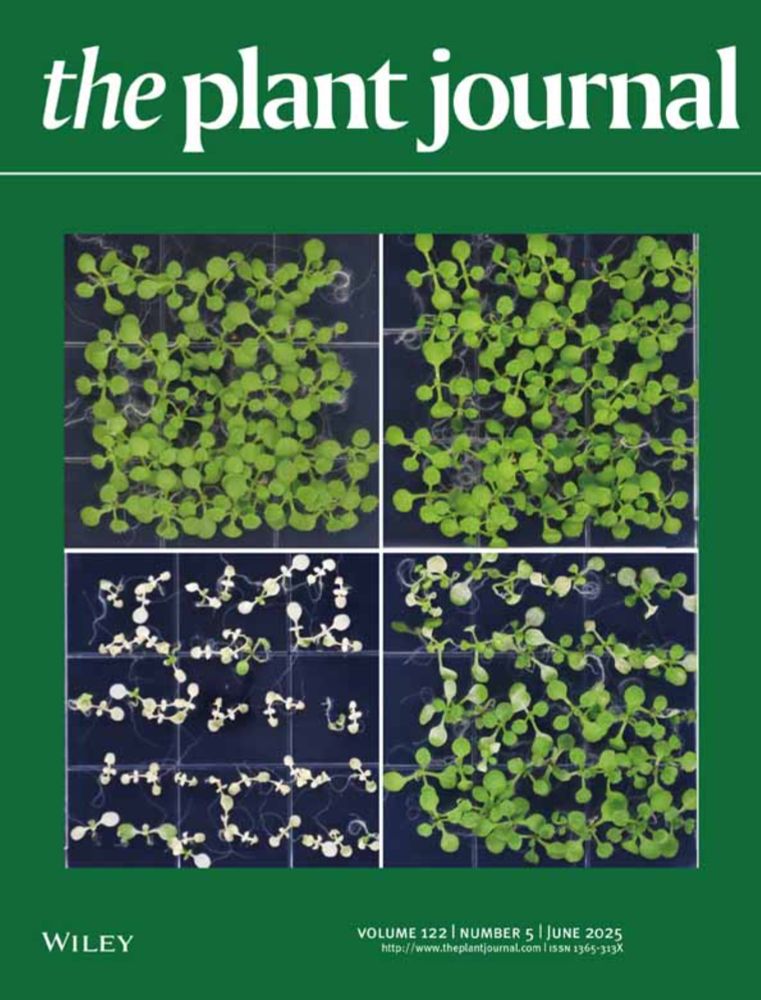
How DEAR4 keeps plants cool under pressure
Click on the article title to read more.
💡𝐑𝐞𝐬𝐞𝐚𝐫𝐜𝐡 𝐇𝐢𝐠𝐡𝐥𝐢𝐠𝐡𝐭
𝑯𝒐𝒘 𝑫𝑬𝑨𝑹4 𝒌𝒆𝒆𝒑𝒔 𝒑𝒍𝒂𝒏𝒕𝒔 𝒄𝒐𝒐𝒍 𝒖𝒏𝒅𝒆𝒓 𝒑𝒓𝒆𝒔𝒔𝒖𝒓𝒆
Read this nice highlight by @gwenkirschner.bsky.social about the role of DEAR4 in linking LLPS to heat-responsive gene regulation.
📖 doi.org/10.1111/tpj.70276
Find original research by Wang, Gong, & Zhu
👉 doi.org/10.1111/tpj.70172
25.06.2025 08:27 — 👍 2 🔁 2 💬 0 📌 0
HSP90-mediated stress resilience in male gametophyte of Arabidopsis thaliana https://www.biorxiv.org/content/10.1101/2025.06.21.660849v1
23.06.2025 15:02 — 👍 1 🔁 1 💬 0 📌 0
Multi-Omics Analysis of Heat Stress-Induced Memory in Arabidopsis https://www.biorxiv.org/content/10.1101/2025.06.19.660594v1
23.06.2025 15:01 — 👍 3 🔁 1 💬 0 📌 0
Redesigning petal shape, size, and color in soybean reveals unexpected phenotypes for floral organ development https://www.biorxiv.org/content/10.1101/2025.06.05.657847v1
06.06.2025 21:05 — 👍 6 🔁 3 💬 0 📌 1
Congratulations 🎊
15.06.2025 10:31 — 👍 1 🔁 0 💬 0 📌 0
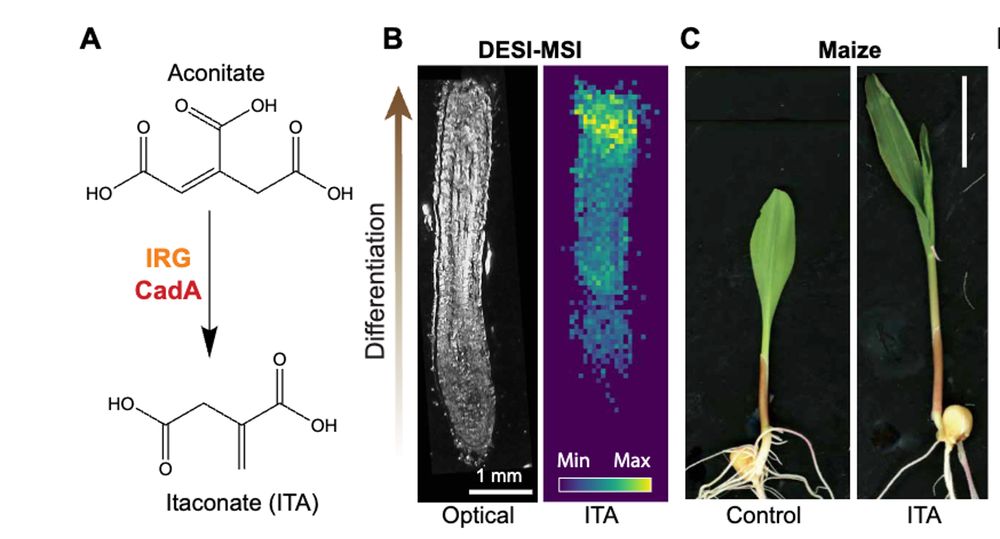
Itaconate, the poster-child for metabolic reprogramming in animal immunity, now comes out to play in plants!
www.science.org/doi/pdf/10.1...
13.06.2025 13:46 — 👍 7 🔁 5 💬 1 📌 0
Faculty of Biological Sciences at IISER Mohali. Studying Plant -Environmental interactions.
Lab website: https://www.sbslab.co.in/
Postdoctoral Researcher in Prof. Cyril Zipfel group at University of Zurich. PhD from NCBS, Bengaluru, India.
Mexican Historian & Philosopher of Biology • Postdoctoral Fellow at @theramseylab.bsky.social (@clpskuleuven.bsky.social) • Book Reviews Editor for @jgps.bsky.social • https://www.alejandrofabregastejeda.com • #PhilSci #HistSTM #philsky • Escribo y edito
Postdoc at UTAS. Plant water relations
Learned society bringing together a community of applied biologists around the world under a broad mission to improve agricultural productivity.
https://www.aab.org.uk/
Postdoc@Carnegie Institution for Science, Stanford University
Plant development Biology, Cell integrity, Hormone signaling, proteomics
Geneticist interested in (meiotic) recombination and impact of chromatin structure on DNA functions
http://dgb.amu.edu.pl
PhD @IISER Pune, India
Molecular Plant Biologist
Professor of Plant Science. Director, ANU Agrifood Innovation Institute. St Kilda faithful. https://biology.anu.edu.au/people/academics/owen-atkin
Molecular plant biologist at sotonbiosciences.bsky.social, Director of SoCoBio DTP. Views are my own.
https://www.southampton.ac.uk/people/5wyk8h/professor-matthew-terry
Assistant professor of plant ecophysiology #EcoPhys at the University of Florida. he / him. Studying #WhatKillsTrees http://ecophyslab.com
Plant ecophysiologist, global/climate change & plants, lover of pop culture, nerd for cats, will ask for donuts. she/her/hers
We study plant ecophysiology traits underlying adaptation to heatwaves, drought, and other stressors 🌵🌳☀️💧
Led by Dr. Kevin Hultine | Desert Botanical Garden, Phoenix, AZ
Website: dbg.org/research-conservation/dpel
Tree ecophysiologist, parent, ocean swimmer and brownie baker. I'm interested in forests, water, carbon, climate change. Pākehā (she/her), Auckland Uni Prof
Tree Ecophysiology Professor, University of Florida School of Forest, Fisheries, and Geomatics Sciences. Trees, forests, forestry. Posts do not represent my employer.
Plant ecophysiology starter pack:
https://go.bsky.app/Pbq39H7
Dad, husband, plant ecophysiologist (UC Davis), cyclist. Californian, Virginian, Utahn, Canberran, New South Welshman, Tasmanian, and deifier of wombats.
Biologist and Associate Dean for Research and Development @Chapman University. Landscape ecophysiology; ecohydrology; isotope biogeochemistry; tropics; evidence-based teaching practices
Aspiring naturalist and plant nerd. I teach about Climate Change & Tree Physiology. Expert in plant ecophysiology, stable isotopes, dendrochronology. I also study fish otoliths. Husband and Dad. Assoc Prof of Forest Ecology & Mgt at Michigan Tech.
Researches pyroecophysiology, fire ecology, remote sensing, fire social science, lidar, and anything else that interests me. Prof and Chair - Earth and Spatial Sciences - College of Science - University of Idaho
 19.08.2025 15:50 — 👍 5 🔁 1 💬 0 📌 0
19.08.2025 15:50 — 👍 5 🔁 1 💬 0 📌 0







